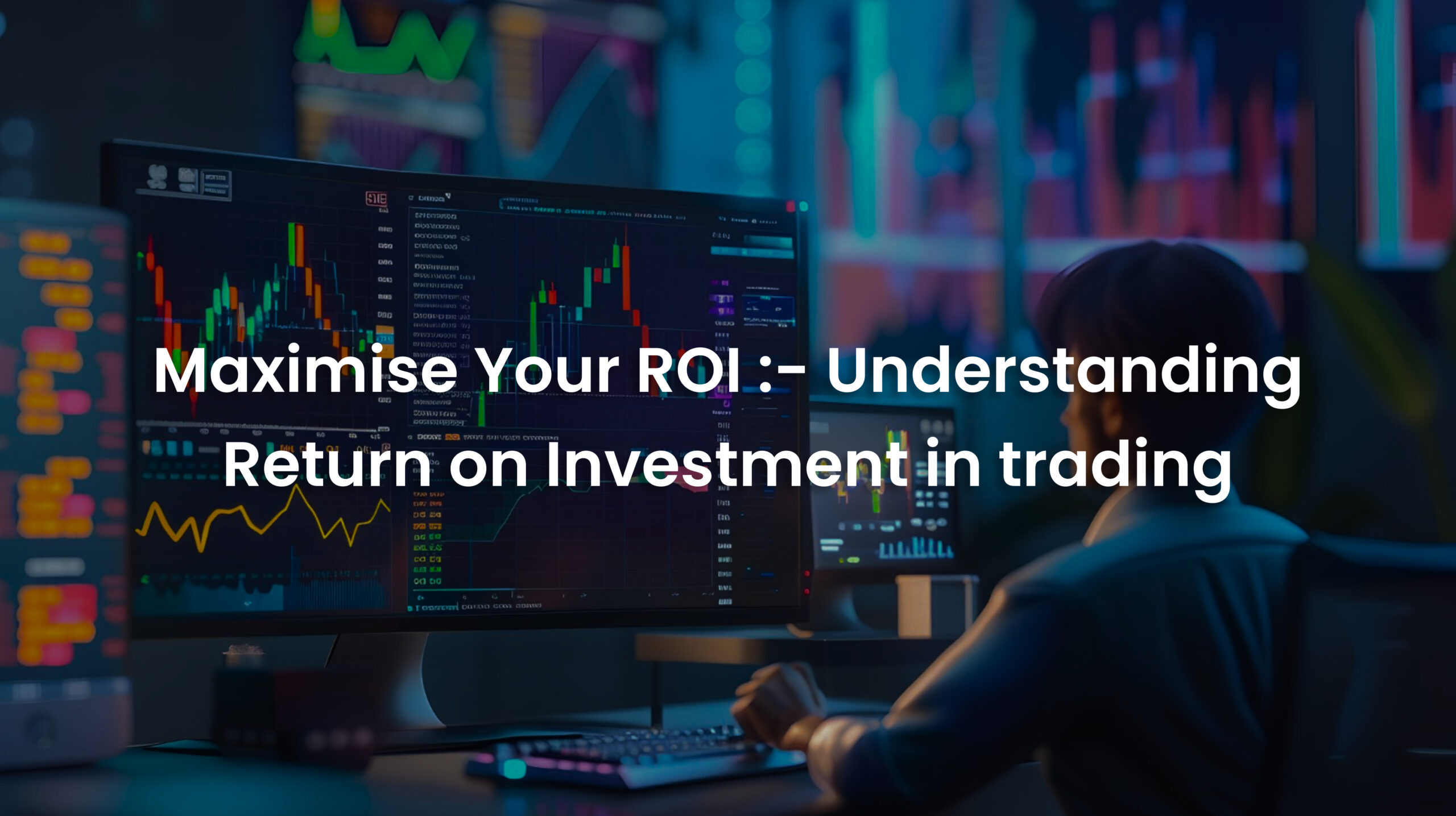Preface – Return on Investment (ROI):
In the fast-changing trading world, Return on Investment (ROI) is very important. This measure provides a definite way to see how profitable your trading is. Understanding how to calculate ROI and then interpreting the result helps in making decisions, adjusting strategies, and eventually attaining more money.
What is ROI?
ROI is an acronym that denotes Return on Investment, a financial indicator for gauging investment profitability viscerally with its costs. To put it differently, it indicates your earnings (or losses) in relation to your investments.
This statement can be broken down as follows:
- Profit or Loss: In essence, it represents the difference between the final value of your investment and the amount you paid for it.
- Cost: It refers to the first amount that was used for investment purposes.
- Calculation: To calculate ROI, you need to take the net gain (or loss) and divide it by the original investment before multiplying by a hundred to express it as a percentage.
Why is ROI important?
- Comparison: return on investment gives us a picture of how different investments are performing.
- Decision-making: It becomes useful when deciding whether to go for certain investments or not.
- Appraisal: It is useful in measuring the power of the various trading tactics or strategies followed by an individual in their trading actions for instance.
How to Calculate ROI?
Calculating ROI:
Return on Investment, or ROI, is a financial metric that reflects the profitability of an investment in relation to its cost. To evaluate your profitably using ROI, you need to know the following:
Formula:
ROI = (Net Profit / Cost of Investment) x 100
Steps:
- Net Profit Calculation: This process involves subtracting the initial cost of investment from the final value of investment. It’s good if you have profit because in that case, your net profit is positive; however, if there is a loss, it is negative for net profits.
- Initial Investment Division: Just divide net profit by how much you spent for that investment at the start point.
- Multiply by 100: After doing this multiplication obtain a percentage from that result.
Example:
If you invested $1000 and made a profit of $200, your ROI would be:
ROI = (200 / 1000) x 100 = 20%
This means your investment generated a 20% return.
Interpreting ROI:
A higher ROI generally indicates a more profitable investment. However, it’s important to consider other factors such as risk, time horizon, and the overall market conditions when evaluating investments.
How to Determine a Good ROI?
Determining a Good ROI:
A “good” ROI depends on various factors, including your risk tolerance, investment horizon, and the overall market conditions.
However, here are some general guidelines:
- Industry Benchmark: Compare your ROI to the average ROI in your industry or sector. If your ROI is significantly higher than the average, it’s generally considered a good return.
- Risk-Adjusted ROI: Consider the level of risk associated with the investment. A higher ROI might be acceptable if the investment is also high-risk.
- Time Horizon: Evaluate the ROI in relation to the time period you held the investment. A higher ROI over a shorter period might be more impressive than a lower ROI over a longer period.
- Opportunity Cost: Consider the alternative investments you could have made and the potential returns they might have generated.
Pros and Cons of ROI:
Pros of ROI:
- Simplicity: ROI is a straightforward and easy-to-understand metric.
- Comparability: ROI can be used to compare the performance of different investments.
- Decision-Making: ROI can help you make informed investment decisions.
- Universality: ROI is a widely used metric that can be applied to various types of investments.
Cons of ROI:
- Time-Based: ROI does not consider the time period over which the investment was held. A higher ROI over a shorter period may not be as impressive as a lower ROI over a longer period.
- Risk-Based: ROI does not account for the level of risk associated with an investment. A higher ROI might come with higher risks.
- Currency Fluctuations: ROI can be affected by currency fluctuations, especially for investments in foreign markets.
- Limited Perspective: ROI focuses solely on financial returns and may not consider other factors such as social or environmental impact.
Overall, ROI is a valuable tool for measuring investment performance, but it should be used in conjunction with other metrics to get a complete picture. It’s essential to consider the limitations of ROI and evaluate investments based on your individual goals and risk tolerance.
Final Words:
ROI is a valuable tool for measuring the performance of your trading activities. By understanding how to calculate and interpret ROI, you can make more informed decisions and optimize your trading strategies. However, it’s essential to consider the limitations of ROI and use it in conjunction with other metrics to get a complete picture of your investment performance.
We present a complete, integrated solution that aims at simplifying your proprietary trading business processes. Enhance Proprietary Trading with innovative technology.

